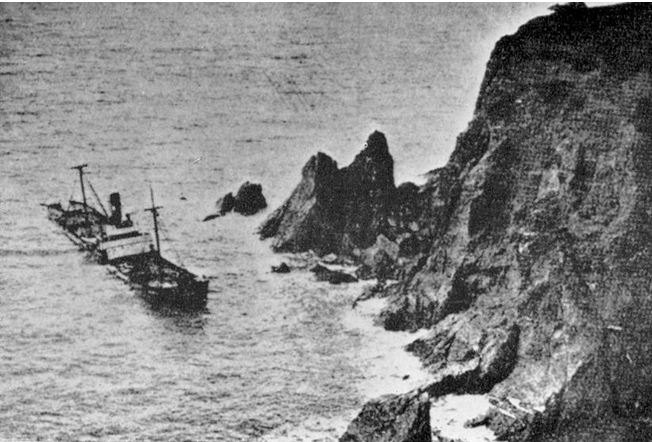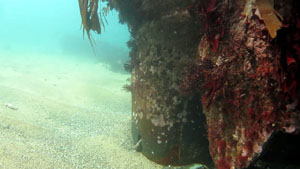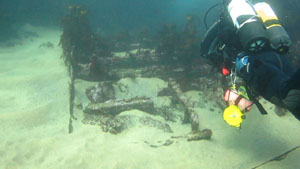SS Cantabria 1932
N50 12.936 W3 49.078

The adjacent photo shows the 263 feet Spanish steamship ‘SS Cantabria’ . She was carrying iron ore and was on route from Biboa in Spain to Newcastle when she encountered thick fog and a large swell creating a navigation hazard with many near misses in the English Channel that day. Eventually she hit Gregory rocks and drifted into Steeple cove on the south coast of Devon where she sank on
13 December 1932. One of the crew did point out to a local newspaper reporter that the bad luck was probably caused by name changes of the ship during its life. She was built by Austin S.P & son Ltd based in Sunderland and started life as a British steamer ‘Hornsby’ in 1898 and in 1920 was sold to WM Cory & Son of London and renamed ‘SS Corcraq. In 1924 she was sold for the final time to Liano L and re named as the ‘Cantabria’. Austin and son later became famous for their development of the Austin Pontoon designed to be sink and be re floated under ships.
Cantabria’s jouney had already been an eventful one as the captain ‘Josef Learreta’ ordered the ship to return to Biloa as one of the crew had broken his arm. During the voyage part of the mast had also broken narrowly missing a crew member.
This 1803 T steamer is one of many ships wrecked between bolt head and bolt tail, and just like the rest she has been broken up into many pieces over the years.
Her boiler can be seen stood on its end in the adjacent photo.
Steeple cove is no place to be if you want to get ashore due to its steep inaccessible cliffs so the crew of 24 were all stranded on the rocks after getting ashore in the ships lifeboat. This lifeboat was eventually used to ferry the crew to the safety of the Salcombe lifeboat.
Today the boilers of the wreck lay against the cliff in position 50:12.954 003:49.043.
Although not much of the wreck is visible as can be seen in the photo below it is a very scenic area to dive.
Photos Paul Fiander

